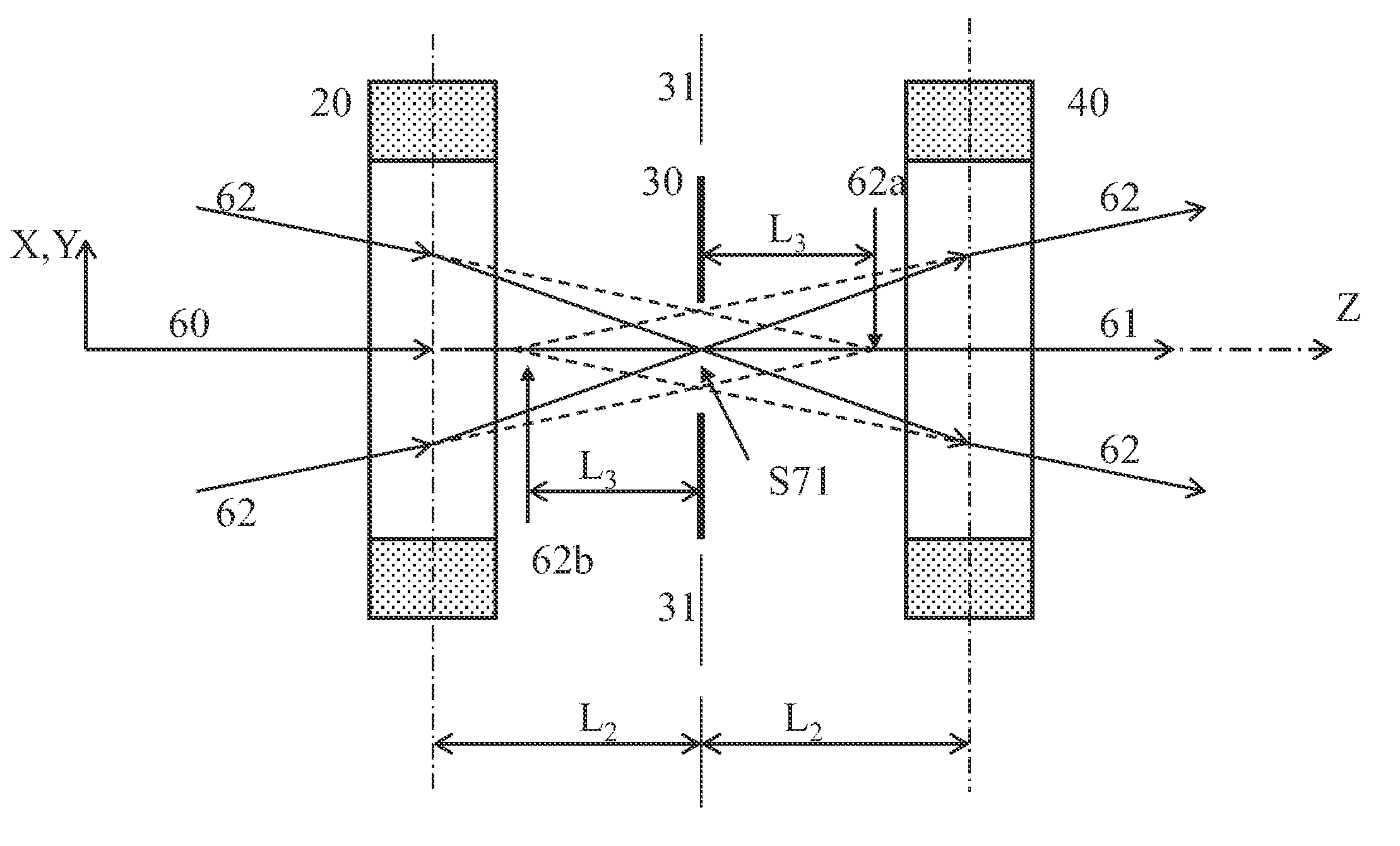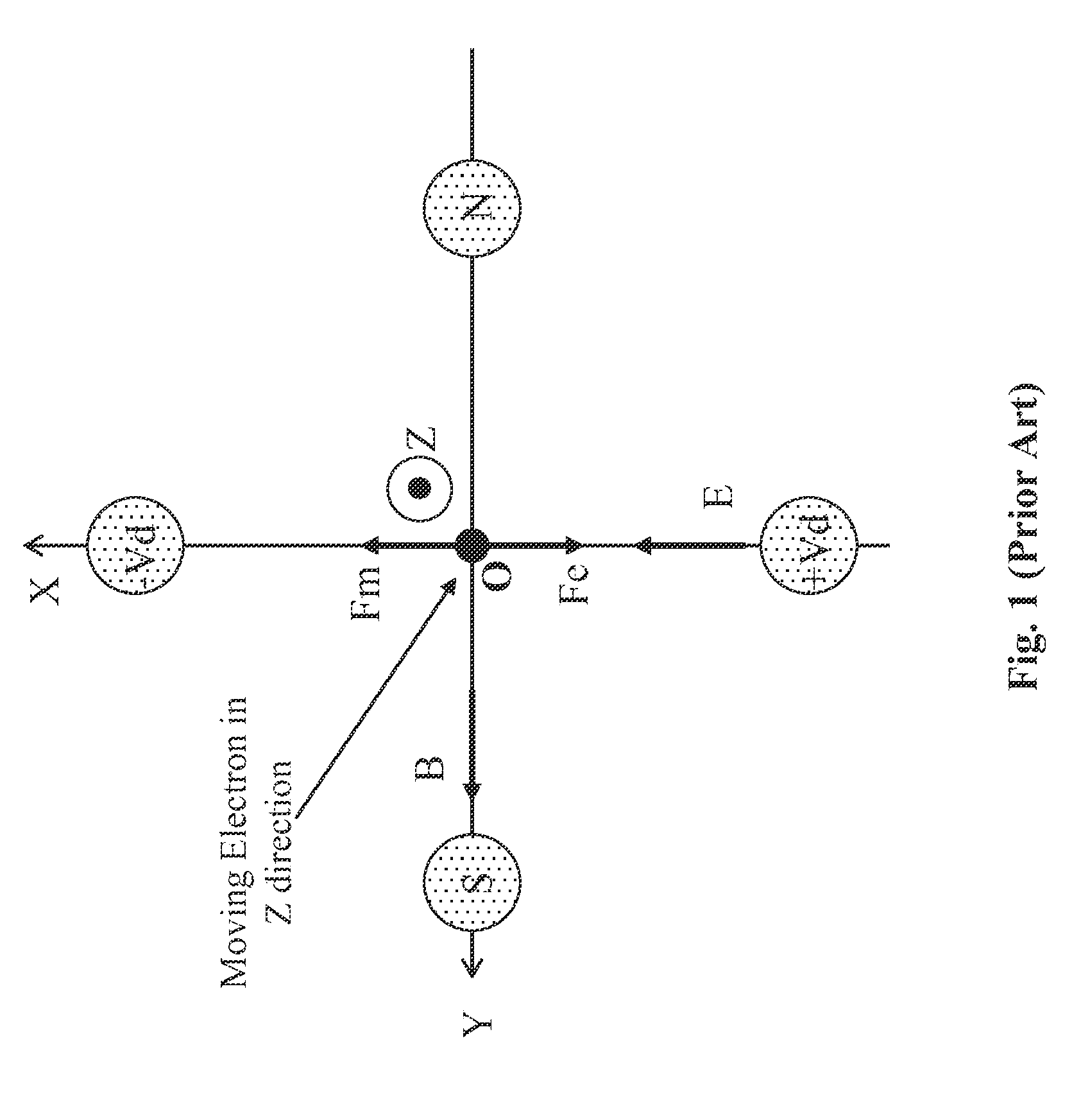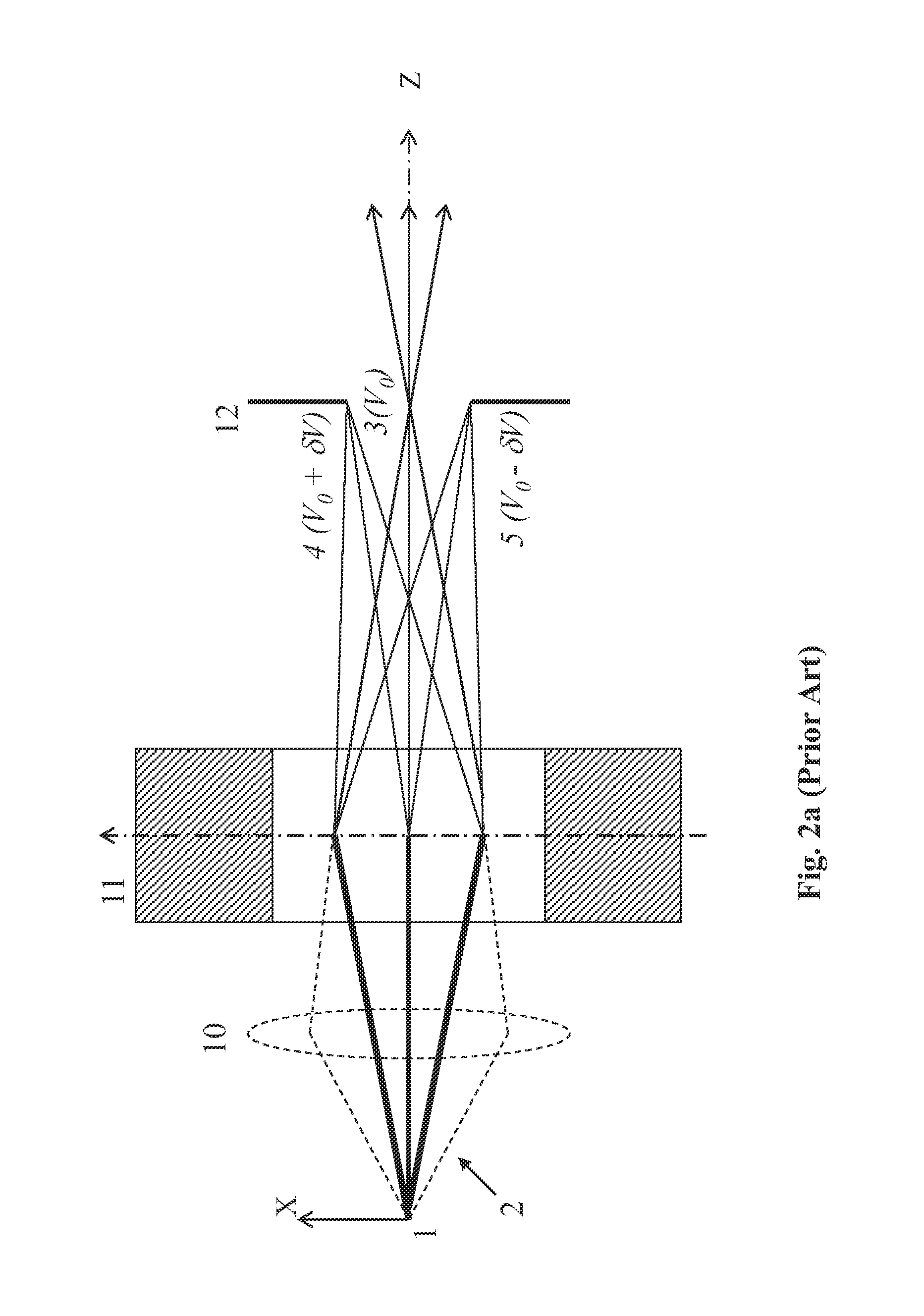Monochromator for charged particle beam apparatus
a charged particle and beam apparatus technology, applied in the direction of beam deviation/focusing by electric/magnetic means, instruments, mass spectrometers, etc., can solve the problems of increasing the source size, reducing the deflection angle, and increasing the resolution, so as to reduce the energy spread of the primary charged particle beam, improve the imaging resolution of low-voltage sem, and reduce the energy spread
- Summary
- Abstract
- Description
- Claims
- Application Information
AI Technical Summary
Benefits of technology
Problems solved by technology
Method used
Image
Examples
Embodiment Construction
[0051]Various example embodiments of the present invention will now be described more fully with reference to the accompany drawings in which some example embodiments of the invention are shown. Without limiting the scope of the protection of the present invention, all the description and drawings of the embodiments will exemplarily be referred to an electron source and scanning electron microscope. However, the embodiments are not to be used to limit the present invention to specific charged particle sources and specific electron microscope field.
[0052]The descriptions below will focus on using electron beam, which is a kind of charged particles. In the drawings, relative dimensions of each component and among every component may be exaggerated for clarity. Within the following description of the drawings the same reference numbers refer to the same components or entities, and only the differences with respect to the individual embodiments are described.
[0053]This invention provide...
PUM
 Login to View More
Login to View More Abstract
Description
Claims
Application Information
 Login to View More
Login to View More - R&D
- Intellectual Property
- Life Sciences
- Materials
- Tech Scout
- Unparalleled Data Quality
- Higher Quality Content
- 60% Fewer Hallucinations
Browse by: Latest US Patents, China's latest patents, Technical Efficacy Thesaurus, Application Domain, Technology Topic, Popular Technical Reports.
© 2025 PatSnap. All rights reserved.Legal|Privacy policy|Modern Slavery Act Transparency Statement|Sitemap|About US| Contact US: help@patsnap.com



